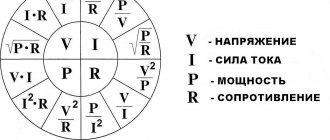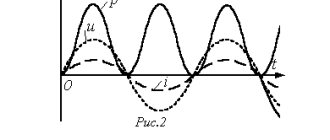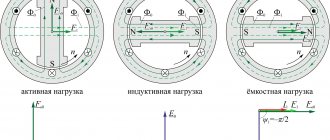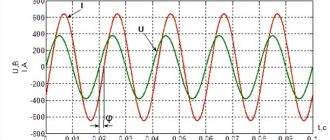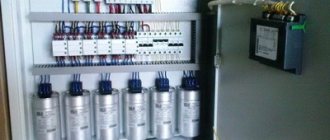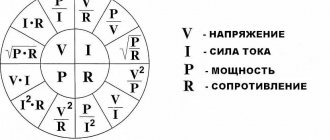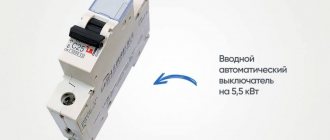The calculation of the electrical energy used by a household or industrial electrical appliance is usually made taking into account the total power of the electric current passing through the electrical circuit being measured. In this case, two indicators are identified that reflect the cost of full power when servicing the consumer. These indicators are called active and reactive energy. Total power is the sum of these two indicators. We will try to talk about what active and reactive electricity is and how to check the amount of accrued payments in this article.
Full power
According to established practice, consumers do not pay for the useful power, which is directly used in the household, but for the full power, which is supplied by the supplier. These indicators are distinguished by units of measurement - total power is measured in volt-amperes (VA), and useful power is measured in kilowatts. Active and reactive electricity is used by all electrical appliances powered from the network.
Reactive electricity concept
This type of electricity is inherent in circuits that contain reactive elements. Reactive electricity is the portion of the total incoming power that is not spent on useful work.
In DC circuits there is no concept of reactive power. In AC circuits, a reactive component occurs only when an inductive or capacitive load is present. In this case, there is a mismatch between the phase of the current and the phase of the voltage. This phase shift between voltage and current is indicated by the symbol “φ”.
With an inductive load in the circuit, a phase lag is observed, and with a capacitive load, it is advanced. Therefore, only part of the total power reaches the consumer, and the main losses occur due to useless heating of devices and instruments during operation.
Power losses occur due to the presence of inductive coils and capacitors in electrical devices. Because of them, electricity accumulates in the circuit for some time. After this, the stored energy is fed back into the circuit. Devices whose power consumption includes a reactive component of electricity include portable power tools, electric motors and various household appliances. This value is calculated taking into account a special power factor, which is designated as cos φ.
Power in an alternating current circuit
Electrical appliances connected to the electrical network operate in an alternating current circuit, so we will consider power under these conditions. However, first, let's give a general definition of the concept.
Power is a physical quantity that reflects the rate of conversion or transmission of electrical energy.
In a narrower sense, they say that electrical power is the ratio of the work performed over a certain period of time to this period of time.
If we rephrase this definition less scientifically, it turns out that power is a certain amount of energy that is consumed by the consumer over a certain period of time. The simplest example is an ordinary incandescent lamp. The rate at which a light bulb converts the electricity it consumes into heat and light is its power. Accordingly, the higher this indicator is initially for a light bulb, the more energy it will consume and the more light it will give off.
Since in this case there is not only a process of converting electricity into some other (light, heat, etc.), but also a process of oscillation of the electric and magnetic field, a phase shift appears between the current and voltage, and this should be taken into account in further calculations.
When calculating power in an alternating current circuit, it is customary to distinguish active, reactive and apparent components.
Concept of active power
Active “useful” power is that part of the power that directly characterizes the process of converting electrical energy into some other energy. It is designated by the Latin letter P and measured in watts (W).
Reactive power calculation
The power factor ranges from 0.5 to 0.9; The exact value of this parameter can be found in the electrical device data sheet. The apparent power must be determined as the active power divided by the factor.
For example, if the passport of an electric drill indicates a power of 600 W and a value of 0.6, then the total power consumed by the device will be equal to 600/06, that is, 1000 VA. In the absence of passports for calculating the total power of the device, the coefficient can be taken equal to 0.7.
Since one of the main tasks of existing power supply systems is to deliver useful power to the end user, reactive power losses are considered a negative factor, and an increase in this indicator calls into question the efficiency of the electrical circuit as a whole. The balance of active and reactive power in a circuit can be visualized in the form of this funny picture:
What is active and reactive electricity on the meter
On the one hand, the work of current can be easily calculated by knowing the current strength, voltage and load resistance. Painfully familiar formulas from a school physics course look like this.
Rice. 1. Formulas
And there is not a word about the reactive component.
On the other hand, a number of physical processes actually impose their own characteristics on these calculations. We are talking about reactive energy. Problems with understanding reactive processes come with electricity bills in large enterprises, because in household networks we pay only for active energy (the amount of reactive energy consumption is so small that they are simply neglected).
Definitions
To understand the essence of physical processes, let's start with definitions.
Active electricity is the fully converted energy supplied to the circuit from the power source. Conversion can occur into heat or into another type of energy, but the essence remains the same - the received energy does not return back to the source.
An example of how active energy works: current passing through a resistance element converts part of the energy into heating. This perfect work of current is active.
Reactive electricity is energy returned back to the current source. That is, the current previously received and taken into account by the meter, without completing the work, is returned. Among other things, the current makes a jump (the load increases greatly for a short time).
It's difficult to understand the process without examples.
The most obvious one is the operation of a capacitor. The capacitor itself does not convert electricity into useful work; it accumulates it and releases it. Of course, if part of the energy is still spent on heating the element, then it can be considered active. The reactive one looks like this:
1. When the capacitor is powered with alternating voltage, along with the increase in U, the charge of the capacitor also increases.
2. At the moment the voltage drop begins (the second quarter cycle on a sine wave), the voltage on the capacitor turns out to be higher than that of the source. And so the capacitor begins to discharge, giving energy back to the power circuit (current flows in the opposite direction).
3. In the next two quarter periods the situation is completely repeated, only the voltage changes to the opposite.
Due to the fact that the capacitor itself does not do any work, the received voltage reaches its maximum amplitude value (that is, √2=1.414 times more than the current 220V, or 220·1.414=311V).
When working with inductive elements (coils, transformers, electric motors, etc.) the situation is similar. The indicator graph can be seen in the image below.
Rice. 2. Indicator charts
Due to the fact that modern household appliances consist of many different elements with and without a “reactive” power effect, the reactive current, flowing in the opposite direction, does very real work on heating the active elements. Thus, the reactive power of a circuit is essentially expressed in collateral losses and voltage surges.
It is very difficult to separate one power indicator from another when calculating. And a high-quality and efficient metering system is expensive, which, in fact, led to the refusal to measure the volume of reactive current consumption in everyday life.
In large commercial facilities, on the contrary, the volume of reactive energy consumption is much greater (due to the abundance of power equipment supplied with powerful electric motors, transformers and other elements that generate reactive current), so separate metering is introduced for them.
How is active and reactive electricity calculated?
Most manufacturers of electricity meters for enterprises implement a simple algorithm.
Q=(S2 - P2)1/2
Here, the active power P is subtracted from the total power S (in an easy-to-understand form).
Thus, the manufacturer does not have to organize completely separate accounting.
What is cosϕ (cosine phi)
Due to the fact that a large volume of actually parasitic reactive currents loads the electricity supplier's networks, the latter encourage consumers to reduce reactive power.
To numerically express the ratio of active and reactive powers, a special coefficient is used - cosine phi.
It is calculated using the formula.
cosϕ = Pact/Ptot
Where total power is the sum of active and reactive.
The closer the indicator is to one, the less parasitic load on the network.
The same coefficient is indicated on the nameplates of power tools equipped with motors. In this case, cosϕ is used to estimate the peak power consumption. For example, the rated power of the device is 600 W, and cosϕ = 0.7 (the average for the vast majority of power tools), then the peak power required to start the electric motor will be considered as Pnomin / cosϕ, = 600 W / 0.7 = 857 VA ( reactive power is expressed in volt-amperes).
Application of reactive power compensators
To encourage consumers to operate the power grid without reactive load, electricity suppliers introduce an additional paid tariff for reactive power, but payment is charged only if the average monthly consumption exceeds a certain coefficient, for example, if the ratio of total and active power is over 0.9, the bill for payment for reactive power is not exhibited.
In order to reduce costs, enterprises install special equipment - compensators. They can be of two types (according to the principle of operation):
- Capacitive;
- Inductive.
Author: RadioRadar
The value of the coefficient when taking losses into account
The higher the power factor value, the lower the losses of active electricity will be - which means that the consumed electrical energy will cost the end consumer a little less. In order to increase the value of this coefficient, various techniques are used in electrical engineering to compensate for non-target losses of electricity. Compensating devices are leading current generators that smooth out the phase angle between current and voltage. Capacitor banks are sometimes used for the same purpose. They are connected in parallel to the operating circuit and are used as synchronous compensators.
The meaning of reactive load
In an electrical circuit with a reactive load, the current phase and the voltage phase do not coincide in time. Depending on the nature of the connected equipment, the voltage either leads the current (in inductance) or lags behind it (in capacitance). Vector diagrams are used to describe issues. Here, the same direction of the voltage and current vector indicates the coincidence of phases. And if the vectors are depicted at a certain angle, then this is the advance or lag of the phase of the corresponding vector (voltage or current). Let's look at each of them.
In inductance, voltage always leads current. The “distance” between phases is measured in degrees, which is clearly illustrated in vector diagrams. The angle between the vectors is denoted by the Greek letter "Phi".
In an idealized inductance, the phase angle is 90 degrees. But in reality this is determined by the full load in the circuit, and in reality it cannot do without a resistive (active) component and a parasitic (in this case) capacitive component.
In a capacitor, the situation is the opposite - the current leads the voltage, because the inductance, when charging, consumes a large current, which decreases as it charges. Although it is more often said that voltage lags behind current.
To put it briefly and clearly, these shifts can be explained by the laws of commutation, according to which the voltage in a capacitor cannot change instantly, and the current in inductance cannot change.
Reactive electricity metering for enterprises
Another thing is enterprises and organizations. A huge number of electrical equipment are installed in production facilities and industrial workshops, and the total supplied electricity contains a significant portion of reactive energy, which is necessary for the operation of power supplies and electric motors. Active and reactive electricity supplied to enterprises and organizations requires a clear separation and a different method of payment for it. In this case, the basis for regulating relations between the electricity supply company and end consumers is a standard contract. According to the rules established in this document, organizations that consume electricity above 63 A need a special device that provides reactive energy readings for accounting and payment. The network company installs a reactive electricity meter and charges according to its readings.
Special cases of reactive power metering
There are cases when a multi-storey building contains both commercial organizations and apartments. The supply of electricity to such houses is regulated by separate Acts. For example, the division can be the size of the usable area. If in an apartment building commercial organizations occupy less than half of the usable space, then reactive energy payments are not charged. If the threshold percentage has been exceeded, then obligations to pay for reactive electricity arise.
In some cases, residential buildings are not exempt from paying for reactive energy. For example, if a building has elevator connection points for apartments, charges for the use of reactive electricity occur separately, only for this equipment. Apartment owners still pay only for active electricity.
Understanding the essence of active and reactive energy makes it possible to correctly calculate the economic effect of installing various compensation devices that reduce losses from reactive loads. According to statistics, such devices allow you to increase the cos φ value from 0.6 to 0.97. Thus, automatic compensating devices help save up to a third of the electricity provided to the consumer. A significant reduction in heat losses increases the service life of devices and mechanisms at production sites and reduces the cost of finished products.
